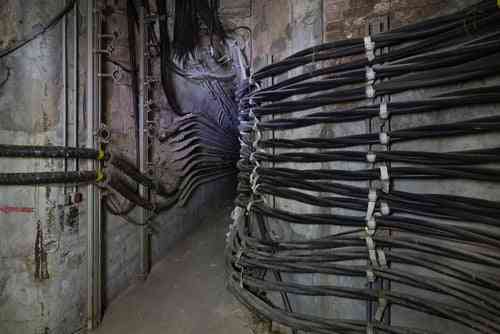Underground Vaults: Out of Sight But Not Out of Reach for Bootlegs
 Utility poles are visible, tangible assets—40 feet of hard to forget wood towering above ground. Exposed and often installed in remote areas, it is easy to imagine bootleg attachers finding their way onto them, and creating potential violations or dangers that can cost pole owners money and create unwanted liability. What if the plant is buried? Is out of sight truly out of mind for bootlegs? Hardly. Just because your conduit is underground does not mean unwanted, un-permitted attachers may not have already set up residence.
Utility poles are visible, tangible assets—40 feet of hard to forget wood towering above ground. Exposed and often installed in remote areas, it is easy to imagine bootleg attachers finding their way onto them, and creating potential violations or dangers that can cost pole owners money and create unwanted liability. What if the plant is buried? Is out of sight truly out of mind for bootlegs? Hardly. Just because your conduit is underground does not mean unwanted, un-permitted attachers may not have already set up residence.
Why Check Conduit?
All kinds of disturbing things can go on underground, from water leaks to rodent infestations to hard to believe bootleg situations. Check out a few of our favorite stories here. Damaged wire and corrosion in coastal areas and northern states where salt is used to treat roadways can also play a role in potential problems underground, and human elements such as lack of training can serve as a wake-up call for creating best practices and better process. Consider this case: the death of a utility worker in an underground electrical vault in 2013. According to official reports, required safety briefings had not been completed, supervisors had failed to check that the power in the vault was off or on, and workers were found to not be wearing proper safety clothing or insulated gloves.[1]
In addition, with wires, equipment, attachments and other items in such close quarters and subject in some cases to vibration from streets above, it is no surprise that fires and explosions can—and do—happen. In January 2013, two underground electrical vaults caught fire in Omaha, Nebraska, shooting fire into the air. Amazingly, it was caught on film, and thankfully, no one was injured in the blast. It happened again in March of this year in Columbus, Ohio. Two explosions rocked the downtown area around 1:30 a.m., propelling manhole covers hundreds of feet. One broke several windows in the Chase Tower. The University of California-Berkeley campus was also evacuated in September 2013 after an explosion that injured several people as well.[2]
How?
One sure way to survey the contents of underground vaults is to open them up and climb in. Conducting comprehensive field audits and NESC inspections on a regular basis can help owners keep tabs on the conditions within vaults as well as the quality of workmanship being done. The more problems that can be found and remedied before they become treacherous situations—or spawn flying manhole covers—the better for everyone.
Keeping Things Above Board Down Below
Using an intuitive, web-based electronic joint use management system like JRM™, a powerful joint use resource database, to track attachment permits and contracts as well as facilitate communication between vault owners and attaching companies is vital to keeping things safe, orderly and in working order in underground vaults. Knowing who has the authority to attach and who is freeloading will also help companies collect rent where compensation is due.
Out of sight should not mean out of mind. Just because your cable is not above ground does not mean it is beyond the reach of bootlegs or violations. Be safe: check your conduit, record the results, and organize with a robust joint use management system.
[1] http://www.macronsafety.com/blog/employee-dies-underground-electrical-vault-california
[2] http://www.dispatch.com/content/stories/local/2014/03/01/manhole-explosions-tied-to-aep-vault.html

Comments